Abstract
A 10 min education programme was developed which, if effective in changing the behaviour of pregnant women, would eliminate or greatly reduce the risk of congenital toxoplasmosis. It was taught in 26 randomly selected (case) prenatal classes offered to women early in their pregnancy. The remaining 26 (control) classes received routine class material which did not mention toxoplasmosis. A questionnaire was administered to all women prior to this early class (pre-test) and again after the last prenatal class, held just prior to delivery (post-test). Changes in pet, food and personal hygiene behaviour between the pre- and post-test were determined and a score calculated by adding points for change towards those behaviours recommended in the programme and subtracting points for change in the opposite direction. Cat owners in case classes had a significantly higher score in pet hygiene behaviour than those in control classes (P less than 0.05). No significant difference was found between the food or personal hygiene scores of women in case and control classes, possibly because of low power. However, although behaviours did not differ on the pre-test, women in case classes had significantly better cooking methods for roast beef and hamburger on the post-test (P less than 0.05 and P less than 0.01 respectively). It is concluded that this programme is effective and should be offered to all women in order to reduce congenital toxoplasmosis incidence.
Full text
PDF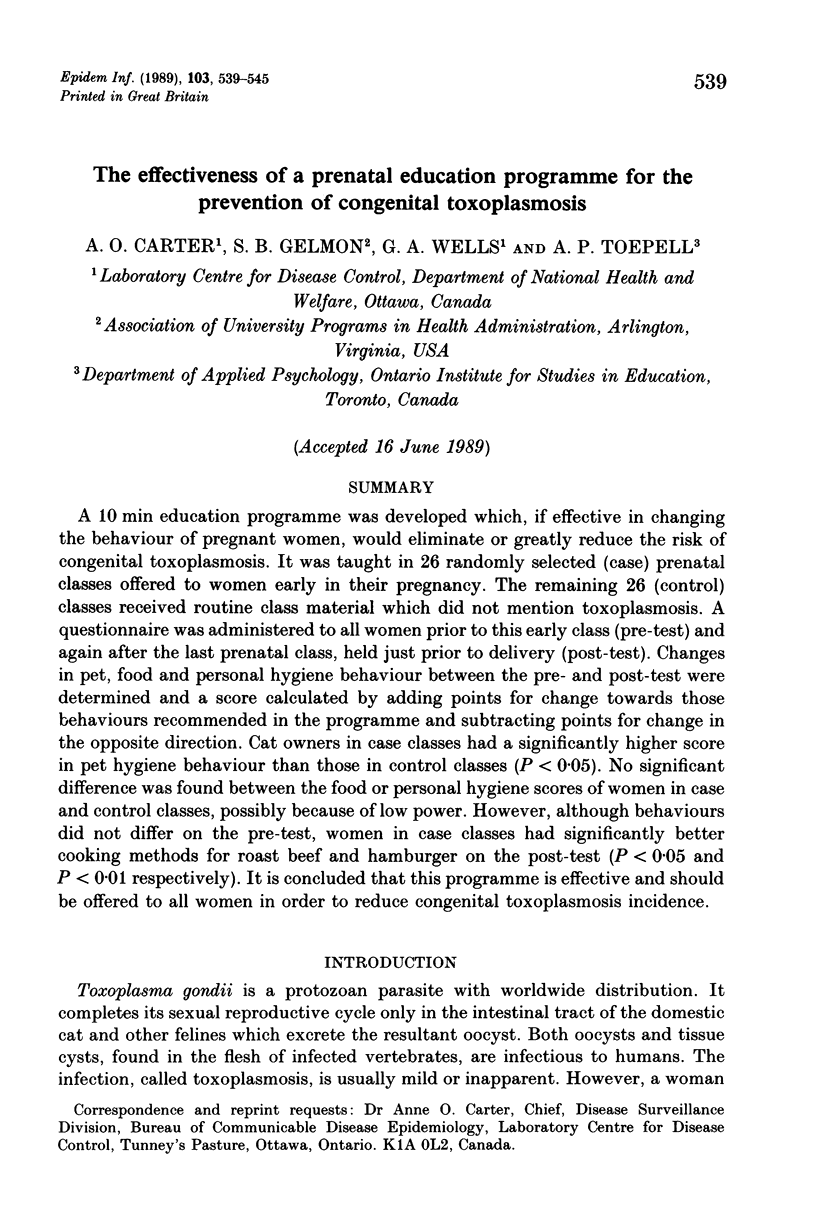
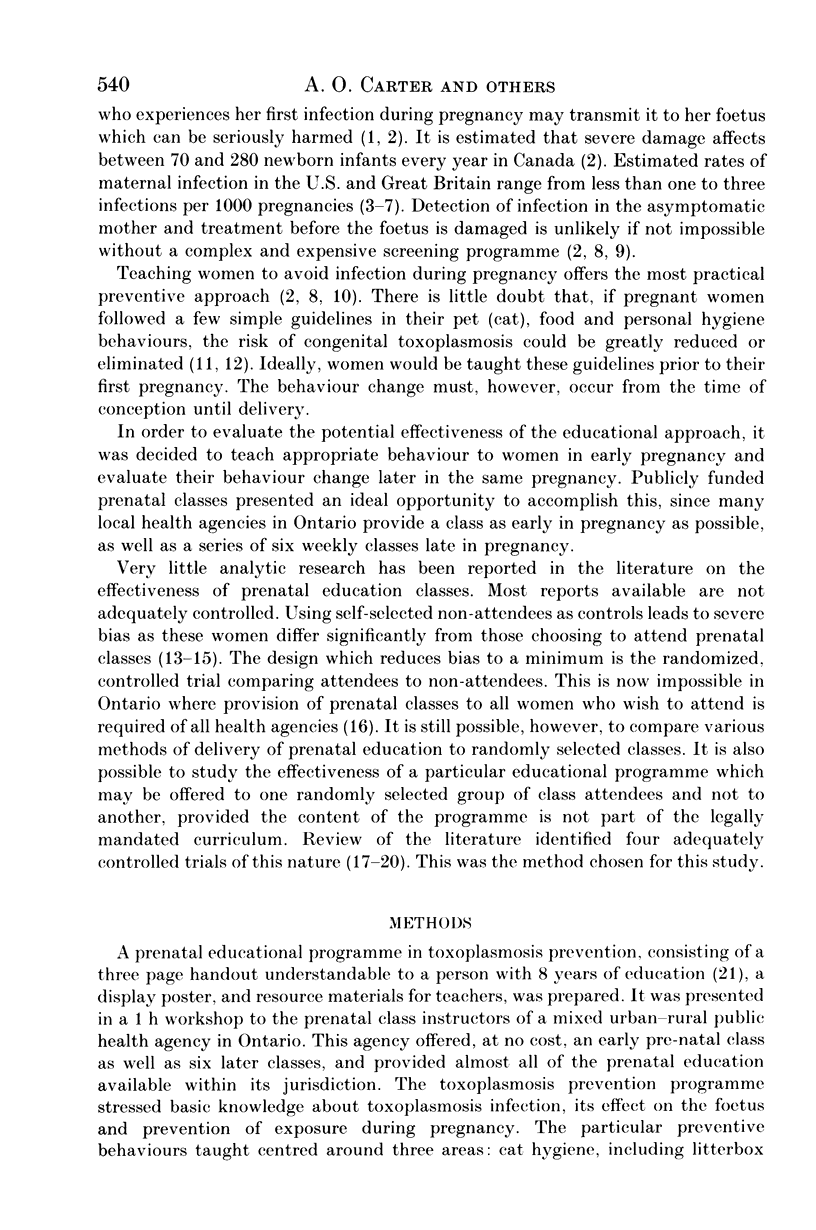
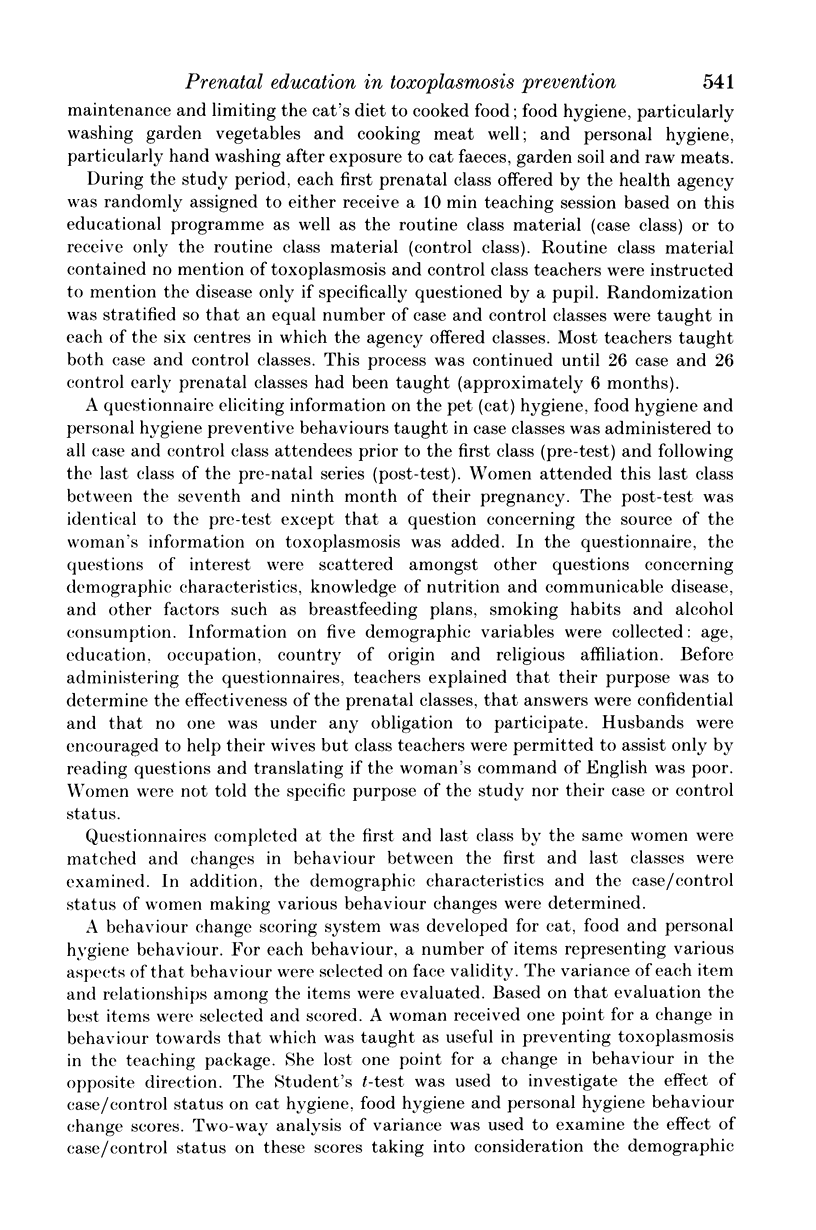
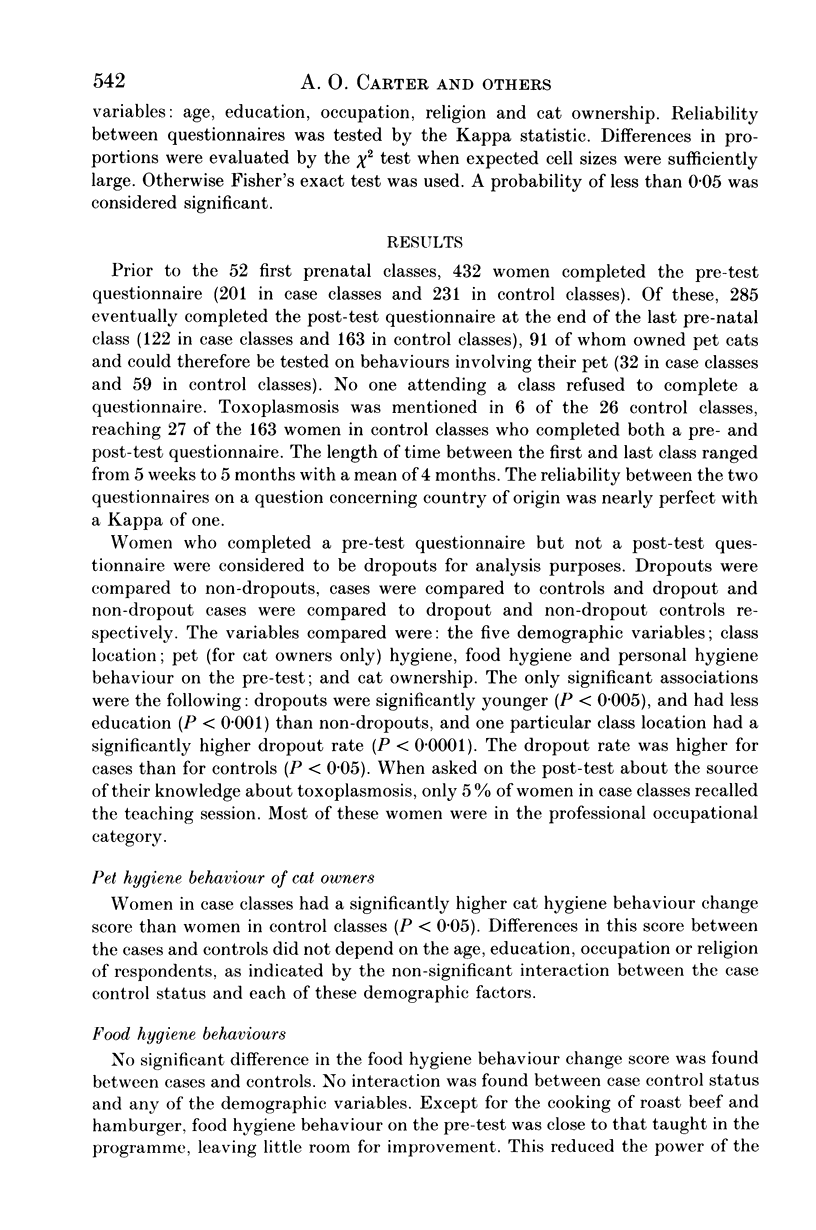
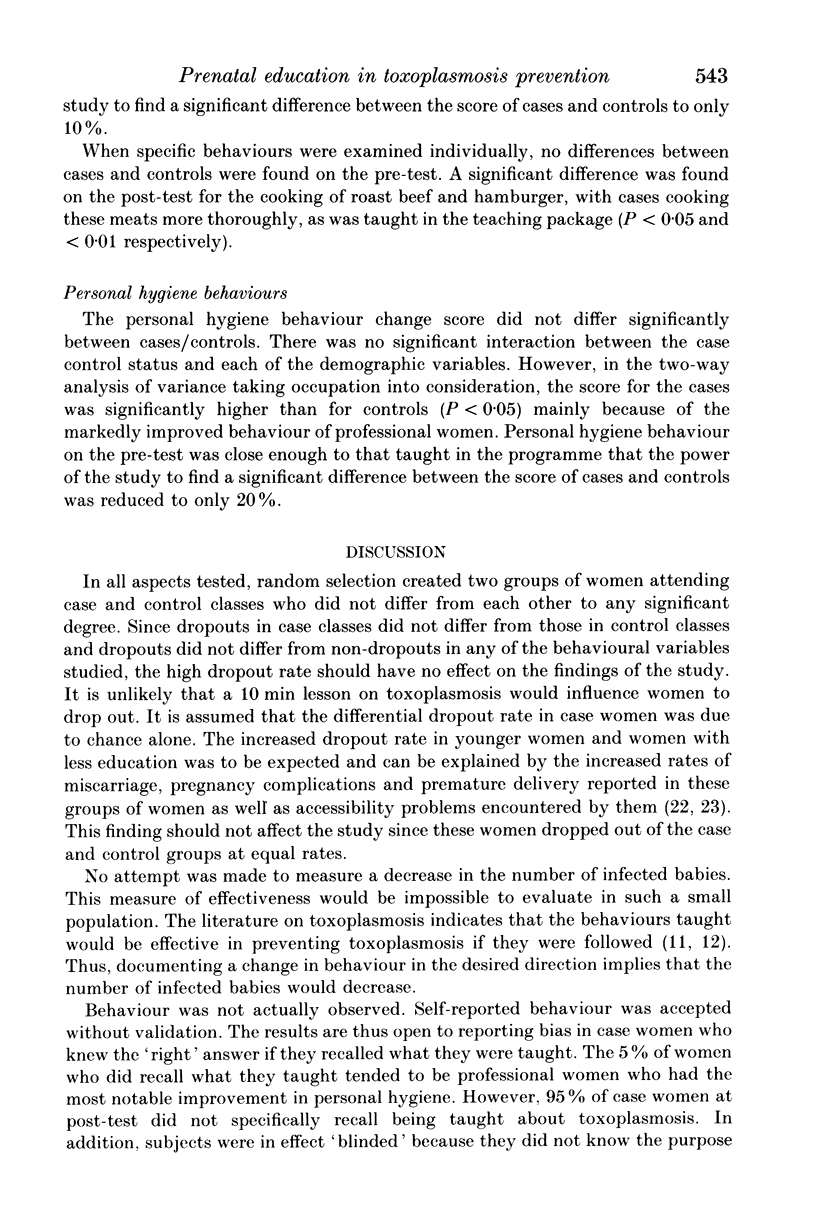
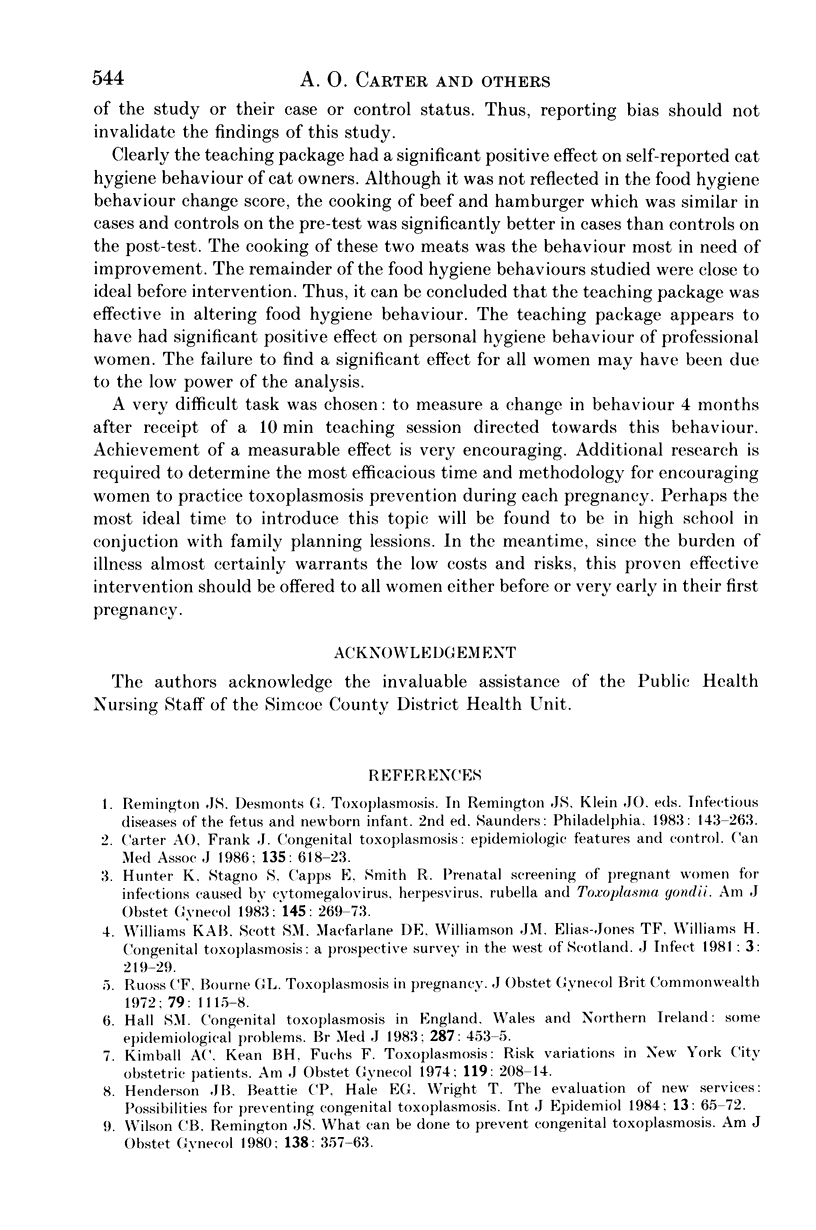
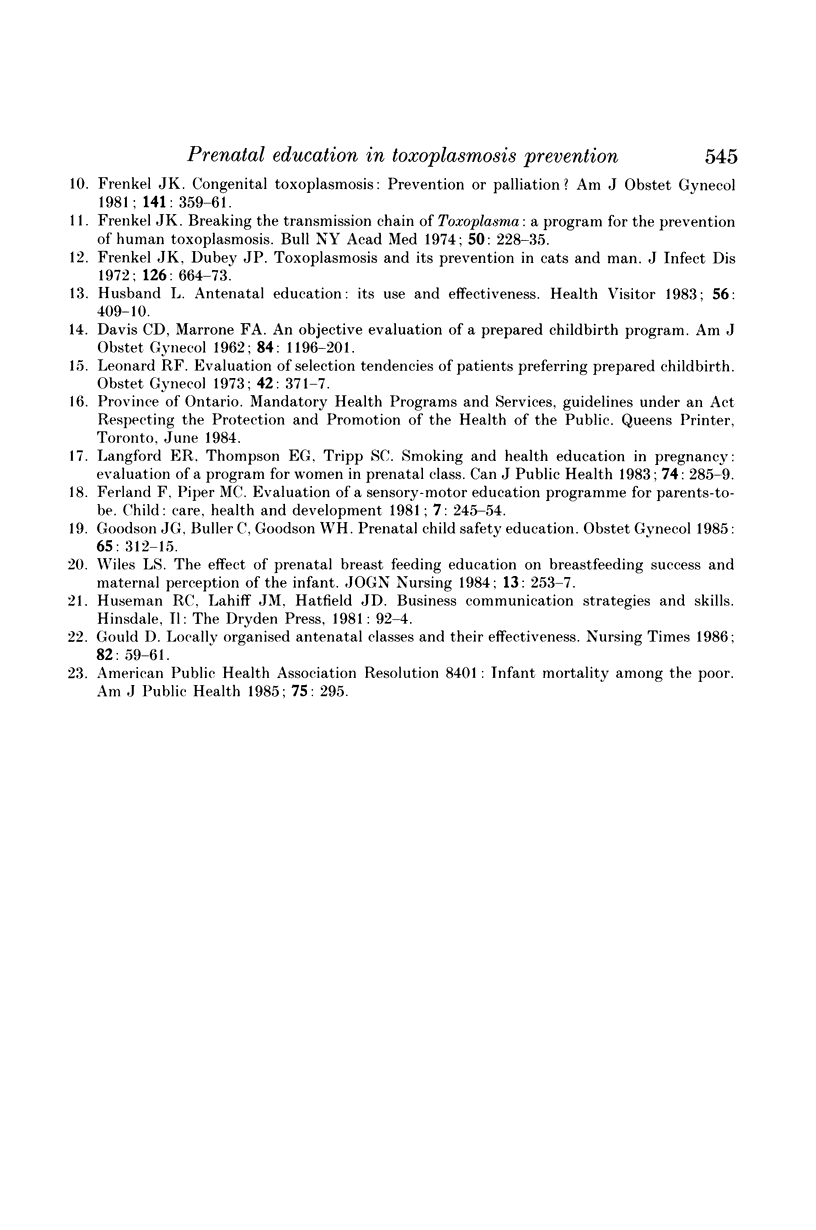
Selected References
These references are in PubMed. This may not be the complete list of references from this article.
- Carter A. O., Frank J. W. Congenital toxoplasmosis: epidemiologic features and control. CMAJ. 1986 Sep 15;135(6):618–623. [PMC free article] [PubMed] [Google Scholar]
- DAVIS C. D., MORRONE F. A. An objective evaluation of a prepared childbirth program. Am J Obstet Gynecol. 1962 Nov 1;84:1196–1206. doi: 10.1016/0002-9378(62)90511-2. [DOI] [PubMed] [Google Scholar]
- Ferland F., Piper M. C. Evaluation of a sensory-motor education programme for 'parents-to-be'. Child Care Health Dev. 1981 Oct;7(5):245–254. doi: 10.1111/j.1365-2214.1981.tb00843.x. [DOI] [PubMed] [Google Scholar]
- Frenkel J. K. Breaking the transmission chain of Toxoplasma: a program for the prevention of human toxoplasmosis. Bull N Y Acad Med. 1974 Feb;50(2):228–235. [PMC free article] [PubMed] [Google Scholar]
- Frenkel J. K. Congenital toxoplasmosis: prevention or palliation? Am J Obstet Gynecol. 1981 Oct 15;141(4):359–361. doi: 10.1016/0002-9378(81)90595-0. [DOI] [PubMed] [Google Scholar]
- Frenkel J. K., Dubey J. P. Toxoplasmosis and its prevention in cats and man. J Infect Dis. 1972 Dec;126(6):664–673. doi: 10.1093/infdis/126.6.664. [DOI] [PubMed] [Google Scholar]
- Goodson J. G., Buller C., Goodson W. H., 3rd Prenatal child safety education. Obstet Gynecol. 1985 Mar;65(3):312–315. [PubMed] [Google Scholar]
- Gould D. Locally organised antenatal classes and their effectiveness. Nurs Times. 1986 Nov 5;82(45):59–61. [PubMed] [Google Scholar]
- Hall S. M. Congenital toxoplasmosis in England, Wales, and Northern Ireland: some epidemiological problems. Br Med J (Clin Res Ed) 1983 Aug 13;287(6390):453–455. doi: 10.1136/bmj.287.6390.453. [DOI] [PMC free article] [PubMed] [Google Scholar]
- Henderson J. B., Beattie C. P., Hale E. G., Wright T. The evaluation of new services: possibilities for preventing congenital toxoplasmosis. Int J Epidemiol. 1984 Mar;13(1):65–72. doi: 10.1093/ije/13.1.65. [DOI] [PubMed] [Google Scholar]
- Hunter K., Stagno S., Capps E., Smith R. J. Prenatal screening of pregnant women for infections caused by cytomegalovirus, Epstein-Barr virus, herpesvirus, rubella, and Toxoplasma gondii. Am J Obstet Gynecol. 1983 Feb 1;145(3):269–273. doi: 10.1016/0002-9378(83)90709-3. [DOI] [PubMed] [Google Scholar]
- Husband L. Antenatal education: its use and effectiveness. Health Visit. 1983 Nov;56(11):409–410. [PubMed] [Google Scholar]
- Kimball A. C., Kean B. H., Fuchs F. Toxoplasmosis: risk variations in New York City obstetric patients. Am J Obstet Gynecol. 1974 May 15;119(2):208–214. doi: 10.1016/0002-9378(74)90036-2. [DOI] [PubMed] [Google Scholar]
- Langford E. R., Thompson E. G., Tripp S. C. Smoking and health education during pregnancy: evaluation of a program for women in prenatal classes. Can J Public Health. 1983 Jul-Aug;74(4):285–289. [PubMed] [Google Scholar]
- Leonard R. F. Evaluation of selection tendencies of patients preferring prepared childbirth. Obstet Gynecol. 1973 Sep;42(3):371–377. [PubMed] [Google Scholar]
- Ruoss C. F., Bourne G. L. Toxoplasmosis in pregnancy. J Obstet Gynaecol Br Commonw. 1972 Dec;79(12):1115–1118. doi: 10.1111/j.1471-0528.1972.tb11897.x. [DOI] [PubMed] [Google Scholar]
- Wiles L. S. The effect of prenatal breastfeeding education on breastfeeding success and maternal perception of the infant. JOGN Nurs. 1984 Jul-Aug;13(4):253–257. doi: 10.1111/j.1552-6909.1984.tb01136.x. [DOI] [PubMed] [Google Scholar]
- Williams K. A., Scott J. M., Macfarlane D. E., Williamson J. M., Elias-Jones T. F., Williams H. Congenital toxoplasmosis: a prospective survey in the West of Scotland. J Infect. 1981 Sep;3(3):219–229. doi: 10.1016/s0163-4453(81)90773-8. [DOI] [PubMed] [Google Scholar]


